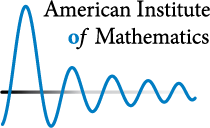2. Classification of maximal reflective arithmetic lattices
Restricting to dimensions $n \geq 2$, there are only finitely many maximal reflective arithmetic hyperbolic lattices. One driving goal is to find an exhaustive list of such lattices that are- uniform and defined over $\mathbb{Q}$.
- non-uniform and defined over $\mathbb{Q}$.
- uniform and defined over a number field $k/\mathbb{Q}$.
-
Problem 2.1.
Scharlau has recently classified all non-uniform lattices in dimensions $n=3$ and $n=4$ (possibly also $n = 5$?). It is known that such lattices do not exist when $n=20$ or when $n \geq 22$. When $n=21$, there is only one reflective arithmetic lattice. Can we classify all non-uniform lattices the remaining $n$-values? -
Problem 2.2.
Can we classify all non-uniform maximal reflective arithmetic lattices when $n=6$? How about just those that are congruence? -
Problem 2.3.
Can we classify non-uniform maximal reflective arithmetic lattices in dimensions $n \geq 10$? How about just those that are congruence? -
Problem 2.4.
For $n=19$, there is only one known example of a non-uniform reflective arithmetic lattice. Is it unique, which is the case for the lone example in dimension $21$? -
Problem 2.5.
Create a central repository (similar to the LMFDB) for all known data relating to Coxeter polytopes in low-dimension.
Cite this as: AimPL: Arithmetic reflection groups and crystallographic packings, available at http://aimpl.org/reflectiongpv.
